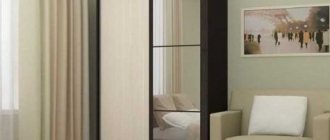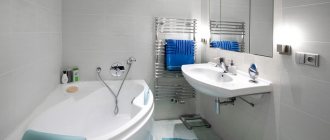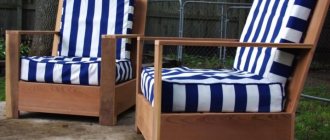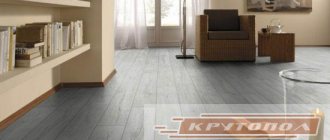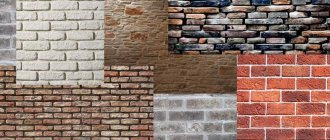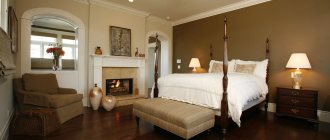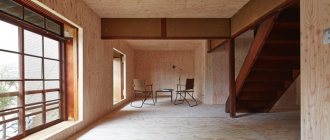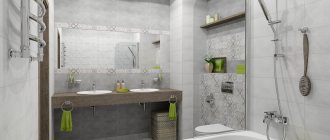How to make a room noble, sophisticated, but one of a kind? One way is to decorate the interior with decorative stucco. Stucco molding is made from gypsum, clay, cement, polystyrene, polyurethane. Among them, polyurethane is the most affordable, flexible and practical. By studying photos of polyurethane stucco molding in the interior, you can easily find ideas on the basis of which you can create your own original design.
Associations: stucco decoration is associated with luxury, aristocracy, and solemnity. Isn't it too pompous? Not necessary. Having successfully played with this nostalgic decoration, they achieve an impression of lightness, grace, and festivity. And at the same time comfort.
Historical reference
Decorations in the form of stucco have been known since ancient times, so ancient that it is not possible to establish a more or less exact date. The most ancient images of stucco decorations found by archaeologists were created in 5000 BC. e. They were made from plaster by hand, were very expensive and were available only to the nobility. Polyurethane has been used for the manufacture of interior decor since the 70s of the 20th century. The first stucco elements made from this material appeared in the USA, then they gained popularity in Europe.
Royal bedroom
Calculate the exact cost of repairs using an online calculator
and receive a free detailed estimate for repairs
Calculate
Do you want your bedroom to look like a royal bedchamber? There are enough details in the interior, but the space looks uncomfortable? Add a repeating pattern of thin, uncluttered moldings. This ornament will correctly highlight your interior.
Photo: brv.bigbluemeenie.com
Technological nuances
Thanks to the special behavior of the two components (polyol, isocyanate), which react with each other, the foaming process starts. Thus, the foam completely fills the selected shape. If there is no limiter, the foam will be loose. To further compact the mass, polyurethane foam is poured into molds under pressure. The mold must withstand high compression, so it is used from heavy metal. The density of the resulting material corresponds to the hardness of coniferous wood. The foam is also easy to process without the risk of cracks or breaks. You can even drive nails into polyurethane stucco. This material is not only dense and plastic, but also lightweight, not susceptible to rotting and damage by insects.
Note to buyers: the technological process of creating high-quality decor is complex. The chain for the production of even one of a kind involves artists, designers, technologists, and highly qualified workers. Errors during production lead to a grainy surface and an unclear blurred pattern (typical of manufacturers from China).
Types of stucco and materials
Now there are two types of stucco: made of gypsum and the more modern one made of polyurethane:
Gypsum. Recently we carried out original stucco molding from plaster, the technological process is simple.
A mold with a certain texture is made, into which plaster is then poured. When the plaster has hardened, the mold is taken out and modified into a sample.
This is how they made any form: patterns, ornaments, friezes, reliefs, etc.
Gypsum stucco molding is durable and harmless to health. Using plaster stucco, you create a stunning interior with the traditions of past centuries.
The disadvantage of gypsum is its heavy weight, because of this, a large amount of glue of the best quality is consumed for strong fixation. Painting plaster is also more difficult than polyurethane.
Installation of plaster stucco molding can only be performed by a professional craftsman with extensive experience.
The complexity of the work and the price of gypsum affect the increase in the cost of this decor, so it is not available to everyone.
With the advent of alternative materials, decorating the interior with stucco has now become affordable.
Polyurethane. The new gypsum analogue is much lighter and cheaper, making it accessible. Now the demand for stucco molding has sharply increased not only in the halls of cultural centers, Youth Palaces, theaters, but also in houses (apartments).
The easy installation of polyurethane, its light weight and flexibility are advantages that instantly made it a popular decor.
Sealing joints between panels - useful information and tips- A modern assistant for cleaning parquet floors
Cleaning after renovation - quickly, efficiently, efficiently
The ability to easily give any color to polyurethane stucco molding, where you can use “aging” methods with an extraordinary effect.
The flexibility of polyurethane is used both on flat areas and with a small radius. Even existing roughness on the wall is no longer a hindrance.
There are other interesting materials for making stucco: glass composite, fiberglass or polystyrene, etc.
Polyurethane and others
What materials are used for interior stucco? What are the advantages and disadvantages of polyurethane compared to them? Let's leave aside clay and fiberglass, which can also be used to make moldings - these materials are rare. There are three pillars on which modern production of stucco decoration rests: gypsum, polystyrene foam and polyurethane foam.
The natural material - gypsum - is durable, helps create a favorable microclimate in the room, thanks to its ability to absorb and release moisture. It is durable and hardly changes over time. The disadvantage is the fear of humidity.
Expanded polystyrene is lightweight and moisture resistant. It is flexible and can be mounted perfectly even on imperfectly smooth surfaces. Even a beginner can handle its installation, but the appearance of such decorations leaves much to be desired. The texture is a bit cheap. In addition, over time it turns yellow. Expanded polystyrene is best suited for painting.
Polyurethane foam is heavier than the previous material and more noble in appearance. Its surface is smooth, clean, rich. Durable (withstands strong impacts well, does not crack) and resistant to moisture, it is almost as good in appearance as natural stucco. In addition, unlike gypsum, it is indifferent to odors, does not absorb them, is not susceptible to mold or mildew, and does not attract dust. Polyurethane foam is easy to clean (which gypsum cannot tolerate). Easy to install, lightweight, adheres well to glue.
Technology for creating stucco on the ceiling surface
Instructions for finishing the ceiling with stucco
If we talk about decorating the ceiling in the classical way, then all the work is done as follows:
- To begin with, dry plaster or alabaster is thoroughly kneaded so that no lumps arise, and then the whole thing is diluted with cold water. In terms of consistency, try to create a solution that most closely resembles thick sour cream.
- The solution is thoroughly mixed, then all forms are filled with it and compacted well with a spatula so that no voids arise.
- Forms containing the solution are left to harden for at least 15 minutes for the solution to harden. But keep in mind that hardening should be carried out at room temperature. It is forbidden to use additional heating, since then cracks may appear on the surface of the stucco molding.
- After the solution has completely hardened, it can be carefully removed from the molds and cleaned with fine sandpaper.
- The stucco elements are glued to the ceiling with PVA glue or liquid nails, after which all the resulting joints are sealed with plaster and cleaned after it dries.
- When the finishing with stucco molding is completed and all defects have been eliminated, you can paint the stucco molding in any color you are interested in.
Types of polyurethane moldings
A non-specialist may be surprised by the variety of jewelry that is made from polyurethane. Judge for yourself:
- Decorative rosettes on the walls, including when they replace photographs or illustrations.
- Columns and pedestals.
- Pilasters.
- Balusters.
- Moldings.
- Skirting boards, borders.
- Caissons.
- Fireplace portals.
- Platbands of windows, doors, mirrors.
- Frames of paintings, panels, shelving.
- Arches.
- Decorative fencing.
- Statues, cameos.
In addition, stucco decoration disguises communications and technological pipes, uneven walls or seams, ventilation, cables, and curtain fastenings.
Stucco molding can fit into any style, including modern ones. Traditionally, decorations are made in classic patterns (swirls, rosettes, floral and floral elements), which are not appropriate in the high-tech or minimalist style, but nothing prevents you from making a cornice in strict geometric lines.
Versatility
A subtle pattern of stucco on the ceiling will be discreet, but at the same time it will complement the interior and add grace. This ceiling will suit any room in any style. An original and unique pattern will make your design individual.
Photo: dekorsaati.com
Stucco in the interior
The stucco complexes look grandiose - the stucco decoration becomes the main highlight of the room, the rest is subordinate to it. An excellent option for a spacious living room. In romantic interiors, two or three details are enough.
Rustic, Provence, Scandinavian, country, and ethnic styles do not accept stucco decorations. High-tech, loft, minimalism also do not harmonize with this type of decor. However, their use is also possible here. Details that seem to have been forgotten by the previous owner, or as if they accidentally came here from another era - original half-columns, rosette lamps - can look especially luxurious. For country and Scandinavian style - coffered ceilings. Also: moldings, decorations on doors or ceilings, on furniture or accessories (vases, flower containers). Any stucco decoration can be painted; oil paints, acrylic-based paints or water-based paints are suitable for polyurethane foam.
Tip: gilding the stucco elements will help make the interior more expensive.
Styles in which stucco decor looks most appropriate:
- Roman - stucco elements create this style. Don't be afraid to go overboard, everything is appropriate. Cornices, niches, decorations, rosettes, pilasters. It is only important to choose the right ornaments.
- Art Deco is a style for bright people who like to combine incongruous things. Any stucco elements will be appropriate here, the main thing is that the room looks elegant and creative, like the creation of a modern artist who has taken the best from each era.
- Empire style - it is characterized by solidity, fundamentality, and the desire to emphasize status. Hence the monumentality in decoration. Columns and arches, heavy cornices, and elegant rich stucco decorations are appropriate.
- Baroque and Rococo . A paradise for molding enthusiasts. Both styles are characterized by pomp, lightness, and light grace. In Baroque, the emphasis is on volume, twisted elements, and asymmetry. Jewelry made from polyurethane foam is decorated in such a way as to achieve the effect of wear, gold, and patina. For Rococo - antique elements, ornaments with military paraphernalia or animals.
- Classicism - stucco elements look great in classic interiors. The main condition is to maintain symmetry, thoughtfulness, and no pretentiousness. Ceilings, fireplaces, door and window openings, and walls are decorated with stucco details.
- Renaissance (rebirth) - for this style, cornices covered with ornaments, niches in the walls, decorated with frescoes or figurines, multi-level ceilings. Elements that form the space are also actively used.
- Romanticism is a sophisticated, light style created to express one’s own individuality. Any stucco elements are possible, but they are delicate and unobtrusive. For example, the frame of the fireplace area and the mirror frame.
- Gothic - stucco elements are acceptable, but only in moderation. Stands (consoles), columns, coffers on the ceiling - all with restrained decor that does not interrupt the gloomy pomp inherent in the style.
In search of style: eclecticism, modern, ultra-baroque, Egyptian and Greek styles also “receive stucco elements with a bang.”
Installation
Stucco molding baguette for stretch ceiling
The adhesive base for polyurethane decorative elements is the following adhesives: special mastic, PVA, liquid nails. The latter are the most effective and most often used. Liquid nails can glue any surface. To glue the stucco molding to the canvas, just lean the decor and hold it for half a minute. Liquid nails should be applied to the reverse side so that when gluing to the ceiling, some of the glue does not squeeze out.
Photos of polyurethane products
To install lighting or decorative lighting, install a stucco molding at a distance of 5 centimeters from the corner - this looks more impressive.
Before installation, it is worth marking the room. You need to start installation from the center of the room. This can be done by finding the intersection of the diagonals of your room. For non-standard premises, the location is selected according to an individual decision. After gluing, the remaining glue is immediately removed with a wet cloth, and the joints of the elements are puttied and painted in the desired color.
Recommendation! It is more convenient to clean a joint of complex geometric configuration with a soft sponge rather than with a spatula. Dip the sponge into the putty and rub it over the joint several times. It follows the complex geometric shape well and can easily fill the seam with putty. After drying, lightly clean the joint with a fine mesh.
When choosing a paint color, white or light colors are often used. Such shades are typical for decoration in a classic style. But if you don’t like it, then choose another one in color and shape. It is recommended to paint with acrylic-based paints.
Coloring decorative baguette
Basic recommendations:
- Before installing stucco, make sure the walls or ceiling are clean and dry.
- The fastening is carried out with the walls being obviously level.
- When calculating the amount of material, it is worth taking into account trimming in the corners of the room, and selecting a pattern at the joint.
Where does polyurethane shine?
Here are some original solutions for premises.
- Multi-level cornices. Beautiful in itself and convenient for decorating the ceiling with LED lighting. Another non-trivial move is to divide the wall into horizontal tiers using cornices. Cornices with relief will support or even create the style of the room.
- Patterns on ceilings, ceiling rosettes. Perform masking and decorative functions. An original ceiling is rare; this way it’s easy to stand out.
- Frieze over the doorway. A frieze is a horizontal ribbon with an ornament. Walls and facades are usually decorated with such tape.
- Moldings are not the most obvious type of decor, but they can give the entire room the appearance of a carefully thought out work of art. Smooth lines of planks on walls, ceilings, and fireplaces give them completeness. Moldings can be used to decorate platbands, wall medallions, mirrors, or highlight part of the wall. In addition, it is an effective tool for expanding space. Moldings without ornament will be appropriate in any style room.
- Balusters - curly columns in the form of columns are suitable for original zoning of a room.
- Capitals, brackets, pilasters are a rare type of decoration in living rooms, since their functionality is limited. As a rule, they are used only for decorative purposes, although capitals can serve as support for light objects. One capital will give the room an antique spirit. And pilasters allow you to divide the space without cluttering the room.
Stucco decoration for ceilings: photo
Ceiling stucco is a common name. This decor includes many different products that differ in shape and appearance. In the traditional version there are:
- Consoles are elements framing columns and various types of projections, as well as panels. Used for decorative division of the ceiling into zones.
- Rosettes are round or oval parts that decorate the mounting location of a ceiling lamp.
- Domes are visual recesses that create the effect of spaciousness in a room. Especially relevant if the room does not have high ceilings.
- Caissons are analogues of domes, but only rectangular in the form of a niche. Give the ceiling surface additional volume and depth.
- Ornaments are details that complement the main picture on the ceiling. With the help of ornaments, designers support the general background or highlight design accents.
- Bas-reliefs or panels are large, separately located stucco elements. Finished stucco molding of this type has its own idea and expressiveness.
- Braids are patterns in the form of intertwining lines that can decorate both part and the entire ceiling.
Advice! Before you begin installing stucco, you will need to make a sketch of the desired result and act on its basis.
